Images
- Selden Connor Gile, Joaquin Miller Home, 1915, oil on canvas, Oakland Museum of California
- Louis Siegriest, Gile's House, 1921, oil on canvas, Oakland Museum of California
The Society of Six was a group of artists who painted outdoors, socialized, and exhibited together in and around Oakland, California in the 1910s and 1920s. They included Selden Connor Gile, August Gay, Maurice Logan, Louis Siegriest, Bernard von Eichman, and William H. Clapp. [1] They were somewhat isolated from the artistic mainstream of the San Francisco Bay Area at the time, and painted in more avant-garde styles than most of their peers, especially after being inspired by modern trends represented in the Panama Pacific International Exposition of 1915.
William Henry Clapp (1879-1954) was the last to join the group and had the most cosmopolitan background, including art training in Montreal and Paris and a six-month stay in New York City. Having lived in Oakland in his youth, he returned in 1917, settled in Piedmont, and began teaching life drawing at the California School of Arts and Crafts. He was appointed acting director of the nearly new Oakland Art Gallery in 1918 and served as its director from 1919 to 1952. In 1923 he organized the first of six annual Society of Six exhibitions at that venue. Although he brought exposure through the gallery to more radical styles of painting, his own work adhered to the features of American Impressionism.
Selden Connor Gile (1877-1947) was the oldest member of the group, more than twenty years older than Siegriest (1899-1989) and von Eichman (1899-1970). Nancy Boas, author of The Society of Six: California Colorists, called Gile "the forceful center of the Six--teacher, provider, and provocative critic." [2] Primarily self-taught, he enthusiastically embraced a vigorous style using broad, rapid brushstrokes and intense, non-naturalistic colors. His home was the social center for the Six, who would follow their days of plein-air painting with critique sessions, food, and drinking.
August (Gus) François Pierre Gay (1890-1948) immigrated from his native France to the United States in 1901, resided primarily with his father and three younger sisters in Alameda, California from 1903 to 1920, [3] and studied at the California School of Arts and Crafts in Berkeley (1918–19) and at the California School of Fine Art in San Francisco while working at several odd jobs. [4] In 1919 and 1920, when his art was exhibited at the Oakland Art Gallery with the work of Gile, Gay’s early use of color was called “unafraid.” [5] By 1921 Gay was a Monterey resident, sharing a studio with Clayton Sumner Price in the Stevenson House, and exhibiting as a regular member of the Carmel-by-the-Sea art colony. [4] Between 1923 and 1926 Gay exhibited with the Society of Six at the Oakland Art Gallery, but withdrew his art from the 1927 show in a dispute with the often dictatorial Selden Gile. [6] While frequently exhibiting his bold Fauvist paintings throughout California (including shows at the Galerie des Beaux Arts, Los Angeles Museum and San Francisco Art Association), he developed a second career as a fine furniture craftsman and was invited to join the Monterey Guild, which was founded by E. Charlton Fortune for the purpose of making ecclesiastical furnishings. [7] In the 1930s he created on the Monterey Peninsula several federally and privately funded murals, which are today regarded as masterpieces. [8] In 1942 Gay moved with his wife to the Carmel Woods and built a home with his own hands. He died on March 9, 1948. [4]

Xavier Timoteo Martínez was a California artist active in the late 19th and early 20th century. He was a well-known bohemian figure in San Francisco, the East Bay, and the Monterey Peninsula and one of the co-founders of two California artists' organizations and an art gallery. He painted in a tonalist style and also produced monotypes, etchings, and silverpoint.
Henry Percy Gray (1869–1952) was an American painter. Gray was born on October 3, 1869 into a San Francisco family with broad literary and artistic tastes. He studied at the San Francisco School of Design and later under William Merritt Chase in New York. While he had some early Impressionistic tendencies, his basic approach to composition and color was derived from the Barbizon School and Tonalism, which were emphasized at the School of Design. He is primarily known for his romantic and lush depictions of the Northern California landscape.
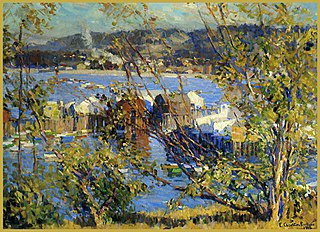
Euphemia Charlton Fortune (1885–1969) was an American Impressionist artist from California. She was trained in Europe, New York and San Francisco. She painted many portraits as well as landscape views of California and European sites. In midlife she turned to liturgical design. She signed her paintings "E. Charlton Fortune," which helped conceal her gender.
Armin Hansen (1886–1957), a native of San Francisco, was a prominent American painter of the en plein air school, best known for his marine canvases. His father Herman Wendelborg Hansen was also a famous artist of the American West. The younger Hansen studied at the California School of Design in the Mark Hopkins Institute of Art and in Europe. He achieved international recognition for his scenes depicting men and the sea off the northern coast of California. He was elected an Associate to the National Academy of Design in 1926 and an Academician in 1948.

Guy Orlando Rose was an American Impressionist painter and California resident, who received national recognition in the late 19th and early 20th centuries.
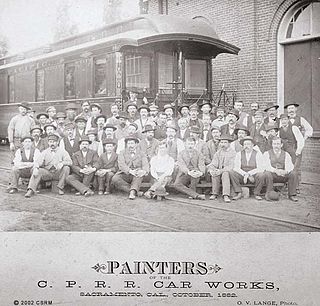
Oscar Victor Lange (1853–1913) was a leading photographer and occasional landscape painter in the San Francisco Bay Area of California during the late 19th century. His work is typically credited as "O.V. Lange".
William Constable Adam was an English-born oil and watercolour painter of Scottish ancestry who spent the last 33 years of his life in California, United States.

William Frederic Ritschel, also known as Wilhelm Frederick Ritschel (1864–1949), was a California impressionist painter who was born in Nuremberg, Germany, on July 11, 1864.

Maynard Dixon was an American artist. He was known for his paintings, and his body of work focused on the American West. Dixon is considered one of the finest artists having dedicated most of their art on the U.S. Southwestern cultures and landscapes at the end of the 19th-century and the first half of the 20th-century.

Francis McComas (1875–1938) was an Australian-born artist who spent most of his adult life in California, receiving some national recognition. He was one of the few California artists invited to exhibit in the 1913 International Exhibition of Modern Art in New York.

Clas Edvard Friström, also known as Claes Edward Fristrom, was an artist and art teacher professionally active in Australia, New Zealand, and the United States of America.

Selden Connor Gile was an American painter who was mainly active in northern California between the early-1910s and the mid-1930s. He was the founder and leader of the Society of Six, a Bay Area group of artists known for their plein-air paintings and rich use of color, a quality that would later figure into the work of Bay Area figurative expressionists.
Clayton Sumner "C. S." Price was an American expressionist painter from Oregon.
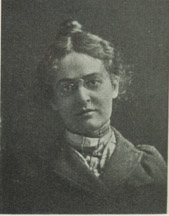
Frances Gearhart was an American printmaker and watercolorist known for her boldly drawn and colored woodcut and linocut prints of American landscapes. Focused especially on California's coasts and mountains, this body of work has been called "a vibrant celebration of the western landscape." She is one of the most important American color block print artists of the early 20th century.
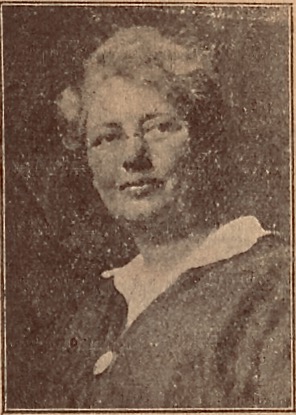
Mary DeNeale Morgan also known as M. DeNeale Morgan, was an American plein air painter, especially in watercolor, and printmaker. She was the director the Carmel Summer School of Art sponsored by the Carmel Arts and Crafts Club and a founding member of the Carmel Art Association (CAA) in Carmel-by-the-Sea, California.
Maurice Logan was an American watercolorist, commercial artist and arts educator. He was a member of the Society of Six, and a professor at the California College of the Arts in Oakland, California.
Louis Bassi Siegriest was an American painter. He was a member of the Society of Six.
William H. Clapp was a Canadian-American painter and art curator. He was a member of the Society of Six in Oakland, California, and an Impressionist landscape painter. He was also the curator of the Oakland Art Gallery.
August Gay whose birth name was Auguste-François Pierre Gay was a French-born American painter and etcher. He was a member of the Society of Six in Oakland, California, and an Impressionist landscape painter.
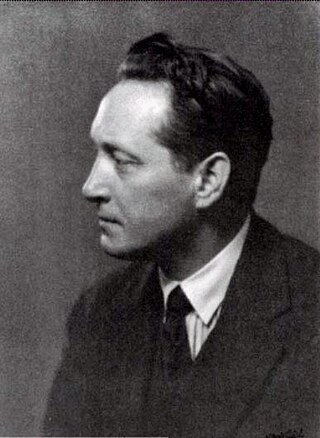
John O'Shea was a California impressionist painter known for landscape, marine, figure, and portrait painting. He was one of the major artists in Carmel-by-the-Sea, California between 1917-1945. He was a resident of Carmel for 36 years.